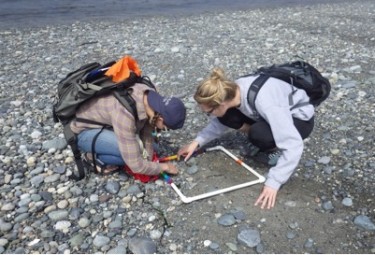Have you ever wanted to don your sleuthing cap and help scientists gather clues about how our world works? A recent study indicates that now, more than ever, citizens are doing just that: collecting data for all types of projects in their spare time, all in the name of science. From counting birds and identifying galaxies to measuring different bacteria in our hot water heaters, citizen scientists are providing a critical service that has a huge economic value…$2.5 billion, to be exact.

To quantify exactly how much volunteers may contribute to biodiversity research, College of the Environment’s associate dean Julia Parrish and other scientists analyzed over 300 projects, creating the largest citizen science database that yet exists. By analyzing these projects the researchers calculated that volunteers invest about 21 to 24 hours each year—half of a workweek per person—and contribute the equivalent of up to $2.5 billion gathering scientific data for biodiversity research. And this is a conservative estimate, as the study took into account only online, English-language projects.
The scientists also documented the exponential rise in citizen science projects over the past few decades, a trend driven by the development of technologies that help us gather and share data (read more about that in this Science article). This increase in citizen science also coincides with rising concerns about plants and animals; indeed, over one quarter of the projects examined in this study were focused not only on measuring biodiversity within different ecosystems, but also on identifying and understanding impacts from factors like pollution, invasive species, and climate change.
This accelerating creation of publicly gathered scientific data adds up to something powerful. Together, people gathering detailed data in their backyards or communities can cover spatial extents from region to globe. And, citizen science projects last about seven years longer than the average NSF-funded project. This kind of breadth leads to really robust data sets, and most of these are freely available for anyone to use. Scientists on their own are unable to gather such volumes of data, let alone provide the analysis and interpret the results in a timely fashion. By leveraging millions of informed citizens, scientists now have the opportunity to respond more quickly to address emerging, large-scale environmental issues.
Perhaps that’s what makes the latest findings so exciting: it means that there is a growing, and mostly untapped, trove of data with which biodiversity scientists can answer more questions about the fate of our biological systems. In fact this study found that, so far, only twelve percent of the data gathered in these citizen science projects have been used to publish peer-reviewed journal articles. Factors influencing the use of citizen science data included not only the scale and the public availability of the data set, but also whether the volunteers had gone through some sort of training for gathering the data. This study’s authors conclude that connections between citizen science and professional researchers need to become stronger so that biodiversity science can harness the investment of the public’s time, making even better use of the growing resource of citizen-gathered biodiversity data.
You can find the published journal article by E. Theobald and others, titled “Global change and local solutions: Tapping the unrealized potential of citizen science for biodiversity research”, in Biological Conservation.
– Written by: Jen Davison

